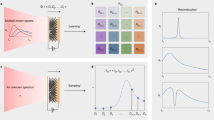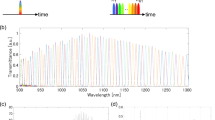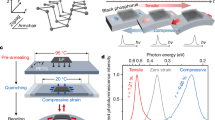Abstract
MENZIES1 and Bär2 showed that it is possible to obtain Raman spectra with crystal powders in which at least some of the stronger lines of the substances are recorded. I have shown3 that the technique of obtaining the spectra with powders is vastly improved if a pair of complementary filters is used, one having a sharp cut-off on the longer wave-length side between the source and the scattering substance to isolate a definite exciting line from the exciting source of light, and the other having a sharp cut-off to the shorter wave-length side in the path of the scattered light in order selectively to weaken or absorb the exciting wave-length. Using this device, it is now possible to record the faintest lines and bands in the spectra of crystal powders and even of amorphous solids by giving suitably long exposures.
This is a preview of subscription content, access via your institution
Access options
Subscribe to this journal
Receive 51 print issues and online access
$199.00 per year
only $3.90 per issue
Buy this article
- Purchase on SpringerLink
- Instant access to full article PDF
Prices may be subject to local taxes which are calculated during checkout
Similar content being viewed by others
References
A. C. Menzies, NATURE, 124, 511 (1929).
R. Bär, NATURE, 124, 692 (1929).
R. Ananthakrishnan, Current Science, 5, 131 (1936).
Author information
Authors and Affiliations
Rights and permissions
About this article
Cite this article
ANANTHAKRISHNAN, R. Constitution of Phosphorous Acid and the Phosphites. Nature 138, 803 (1936). https://doi.org/10.1038/138803a0
Issue date:
DOI: https://doi.org/10.1038/138803a0
This article is cited by
-
Raman spectrum of ammonium chloride and its variation with temperature
Proceedings of the Indian Academy of Sciences - Section A (1947)



